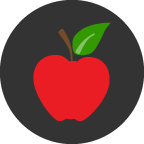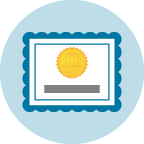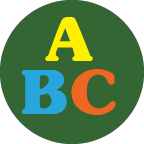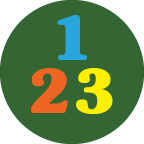 Songs Activities
Songs Activities
Looking for songs to listen to or sing together? Look no further!
-

- Activity Title
- ?
Topic or Theme
Identifying letters in a child's name and listen to ABC (The Alphabet Song)

-


First Name
Brief description of activity or summary of tasks and/or materials used.
-





-
- Physical Activity
- 20
Balance (Gross Motor)
Following oral directions, improving balance, and learning to focus while playing the song "Sonata for Two Pianos in D Major, K448, II. Andante"
-
Balance (Gross Motor)
Following oral directions, improving balance, and learning to focus while playing the song "Sonata for Two Pianos in D Major, K448, II. Andante"
-



-
- Singing
- Singing
Tucker Wore Her Red Dress
-

Tucker Wore Her Red Dress
-
- Art
- 18
Hand Tracing
Listen to "I Believe in You", practice tracing and counting fingers
-
Hand Tracing
Listen to "I Believe in You", practice tracing and counting fingers
-



-
- Senses
- 11
Sight
Singing and acting out finger play "There Was A Little Turtle"
-
Sight
Singing and acting out finger play "There Was A Little Turtle"
-




-
- Name Activity
- 01
First Name
Listen to song "What's Your Name" and finding sock letters
-
First Name
Listen to song "What's Your Name" and finding sock letters
-




-
- Name Activity
- 01
First Name
Listen to song "Alphabet Medley" while learning to recognize child's name
-
First Name
Listen to song "Alphabet Medley" while learning to recognize child's name
-


-
- Art
- 18
Painting
Listening to song "Race: The Final Starlight Express" and painting
-
Painting
Listening to song "Race: The Final Starlight Express" and painting
-

-
- Physical Activities
- 20
Beanbag Balance (Gross Motor)
Moving to song "Por Una Cabeza" (or other song) and having beanbag fun
-
Beanbag Balance (Gross Motor)
Moving to song "Por Una Cabeza" (or other song) and having beanbag fun
-


-
- Target Words
- 15
Under, Up, Down, Tall
Song "The Noble Duke of York" to follow directions and measure family members
-
Under, Up, Down, Tall
Song "The Noble Duke of York" to follow directions and measure family members
-



-
- Target Words
- 15
On, Top, High, Low
Using song "Clap Your Hands Now" to follow directions and reinforcing target words high and low
-
On, Top, High, Low
Using song "Clap Your Hands Now" to follow directions and reinforcing target words high and low
-

-
- Letters
- 05
Q & T & L
Listen to "The Alphabet Song" and create letters out of different materials
-
Q & T & L
Listen to "The Alphabet Song" and create letters out of different materials
-



-
- Lifeskills
- 25
Brushing Teeth
Listen to song "Teeth" and creating a mouth collage
-
Brushing Teeth
Listen to song "Teeth" and creating a mouth collage
-




-
- Colors
- 09
Black
Listen to the song "Miss Mary Mack" and using dominos for building
-
Black
Listen to the song "Miss Mary Mack" and using dominos for building
-




-
- Lifeskills
- 24
Body Parts
Knowing body parts through song “Head, Shoulders, Knees and Toes” and bathtime
-
Body Parts
Knowing body parts through song “Head, Shoulders, Knees and Toes” and bathtime
-



-
- Art
- 19
Body Drawing
Listen to song "Stand By Me" or a different song while children decorate a paper cut out of themselves
-
Body Drawing
Listen to song "Stand By Me" or a different song while children decorate a paper cut out of themselves
-


Activity Skills Focus
1 Social / Emotional Skills
Skills that develop children’s ability to understand the emotions of others and help children recognize and use appropriate social behaviors (for example, making friends). In the Department of Education report “Guiding Principles A Resource Guide for Improving School Climate of January 2014 it states “strategies such as social-emotional learning programs that address non-cognitive skills, including problem-solving, responsibility and resiliency, can also help students develop the skills needed to fully engage and thrive in the learning environment.”
2 Language Skills
Skills that help children understand and communicate during early childhood. The alphabetic principle (knowing letter names and sound-letter matches) aids in language development and is enriched by verbal interactions with other children and adults (reading aloud and engaging in conversation).
View all Language Skills Activities
3 Math / Science Skills
Math and Science skills help children with problem-solving and reasoning. Exploring numbers, patterns, and measurements by using math manipulatives (beads, counters, pennies) are all ways children develop their math skills. Asking questions about their surroundings, learning a science vocabulary (predict, observe), and having hands-on experiences with their environment can help develop their science skills.
4 Motor Skills
Motor skills are actions that involve the movement of muscles in the body. They are divided into three groups:
1. gross motor skills, which are the larger movements of arms, legs, feet, or the entire body (crawling, running, and jumping)
2. fine motor skills, which are smaller actions, such as grasping an object between the thumb and a finger (pencils or scissors)
3. sensorimotor skills which use the five senses to guide physical motions as in eye-hand coordination.
View all Motor Skills Activities
5 Problem Solving Skills
Skills that help with the construction of thought processes, including memory, problem-solving, and decision-making.
